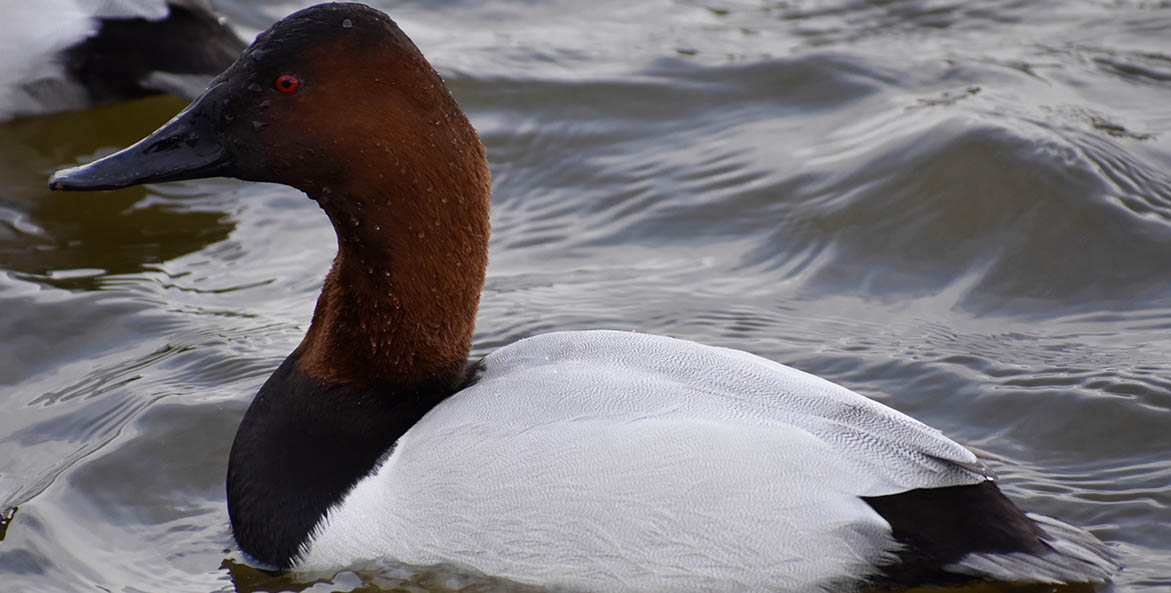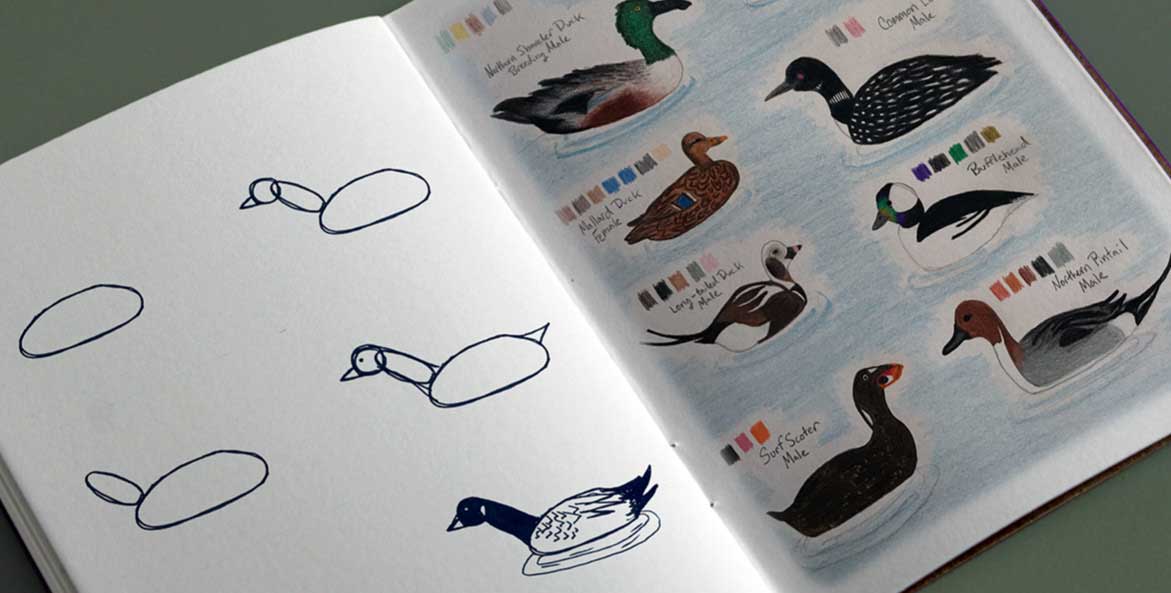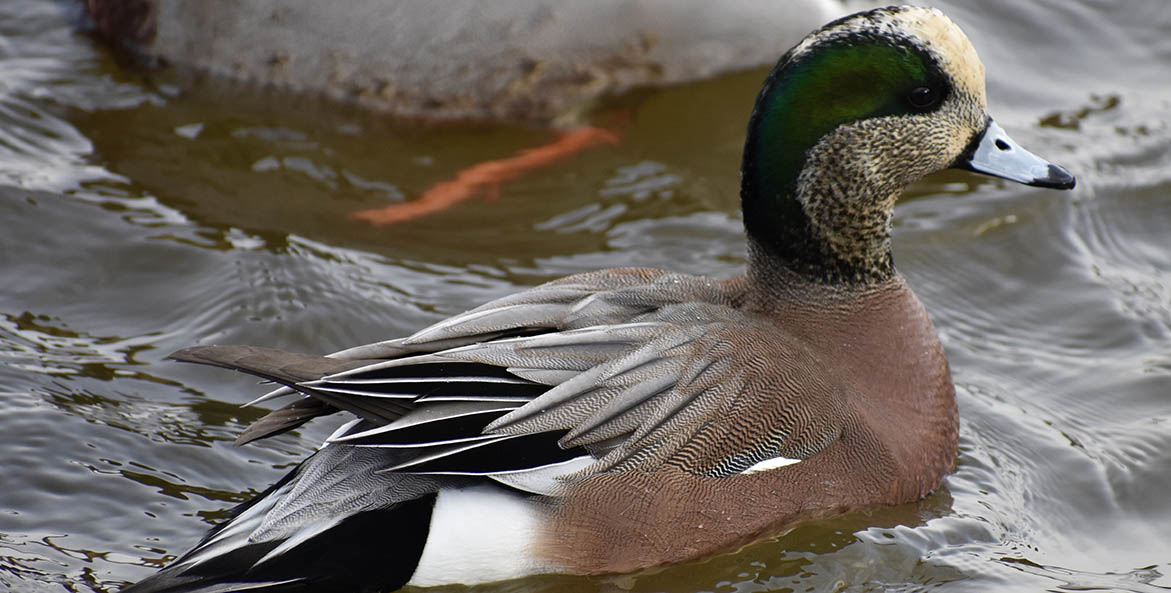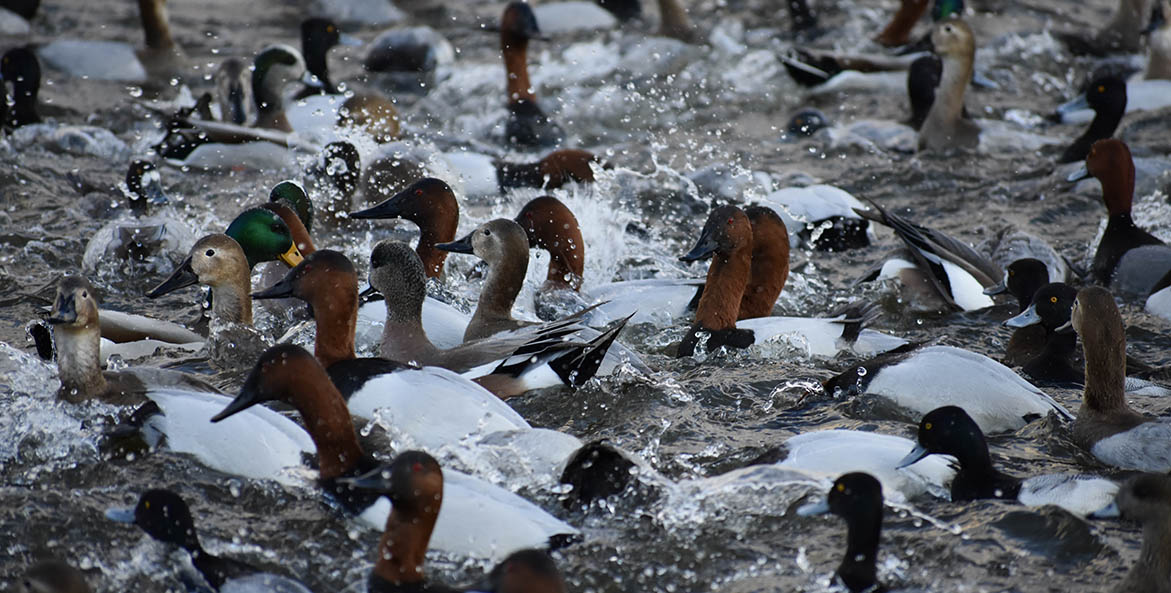See the complete Nature Journaling series.
The winter season can often feel long, cold, and dark on the Chesapeake Bay. A strong wind off the water can send a chill through even the thickest of layers. However, winter on the Chesapeake Bay brings one variance from the gray waters and brown leafless trees that is quite remarkable: waterfowl. Ducks, geese, and swans fly from the frigid north to Bay waters for the winter. They bring vibrant colors and fascinating behavior in a variety of shapes and sizes.
Often, we notice the resident mallard ducks that inhabit the Chesapeake year-round. However, if you push yourself to brave the cold and the wind chill, you will be rewarded. Giant, white tundra swans drift in icy waters, their names alluding to the freezing temperatures they are built to endure. Northern shoveler ducks use spade-like bills to dive for an underwater meal. The male's brilliant green, brown, and blue coloring can catch your eye in the darkest of winter marshes. Stories of extensive hunting from skiffs and duck blinds precede the resilient canvasback duck. Once known for its delicious taste, the canvasback has a bright white back surrounded by black feathers and a gorgeous reddish-brown head framing a haunting red eye.

Canvasback Duck
Morgan Jones/CBF Staff
No matter which waterfowl catches your eye the most, each has its own unique look, behavior, and story. With them being only temporary visitors to the Bay region, we shouldn't take our time with them for granted. Before we know it, warmer temperatures will return, and these mysterious travelers will be long gone.

Morgan Jones/CBF Staff
Art Prompt: Waterfowl Sketching
Materials Needed: Nature journal or paper, pen or pencil, coloring materials*, binoculars*, and field guides* (*optional)
Assignment: Find an area that you have often seen winter waterfowl gathering. This could be by the Bay or a river, or any neighborhood pond or park. Choose a safe and comfortable spot to observe. If too cold to sit outside, you can always take a few photos of your species. Choose a specific duck, goose, swan, or other type of waterfowl to watch closely. Identify the species and try to study its behavior. How does it swim? Does it dive often? Is the species alone, with a group, or with a mate? Do you notice a difference between males and females? Jot down your observations on one side of your paper. If you cannot go outside or find a good area, use the internet or a field guide as your resource. Search for a species of winter waterfowl that comes to your area.
Next, begin to sketch your species by starting out with basic shapes. Perhaps a large oval with a smaller oval as the neck and a circle for the head. Once you have your shapes in the right positions, begin to correct them with little adjustments unique to your species. Study the shape of the beak and let your hand draw as your eye traces the outline. Then, add colors, surroundings, or details of their behavior to your drawing.
Additional Resources:
Further Questions: What makes your species of waterfowl unique? How is your species of waterfowl dependent on the Chesapeake Bay? Do you think water quality affects your species? What threats does your species face?

American Widgeon
Morgan Jones/CBF Staff
Writing Prompt: Sunset Report
Materials Needed: Nature journal or paper, pen or pencil
Assignment: Rising earlier and setting later, the sun is slowly coaxing the quiet winter into spring. It's easy to miss these incremental changes in nature, but there's a lot to be seen if only you look. Determine when the sun sets in your area. Even if the setting sun isn't visible, many natural events are tuned into this time of day providing plenty of opportunity for observation. Waterfowl exhibit many habits during this period including feeding, roosting, and migrating. Document your observations. What do you see, hear, smell, and sense? What colors are visible and how are they changing?
In a safe and comfortable location, use your observations to write a sunset report as if you were an evening newsperson. Include any important information that you would like to share about your time spend observing waterfowl at sundown.
Additional Resources:
Further Questions: Why do you think waterfowl are active during sunset? Was there a species you observed that was more active than any other? How do you predict waterfowl behavior will change as the days grow longer?
Check out more Nature Journaling prompts.



